Abstract
Rates of net photosynthesis and dark respiration, and distribution of 14C were determined for new (current season's) and old (previous season's) needles at 10 times during the seasonal development of young Pinus resinosa Ait. trees. The seasonal changes in these factors associated with the development of the new shoot were related to known seasonal patterns of wood formation.
Net photosynthesis per gram of needle dry weight (photosynthetic efficiency) was maximum in the old needles at the time of first new needle elongation; at the same time translocation of 14C from old to new needles was greatest. Photosynthetic efficiency of new needles was maximum at the end of the period of rapid new needle elongation, when the new needles also began exporting much greater quantities of 14C to other plant parts. In particular, the amount translocated from the new needles to the stem was greatly increased. At this time thick-walled xylem cells were first observed in the stem.
These results, together with those of previous studies, indicate that the production of thick-walled xylem tracheids normally associated with latewood is physiologically correlated with maturation of the current season's needles. Because there is a lesser demand for photosynthate in the new shoot and a high rate of photosynthesis in the whole plant at the time of new needle maturity, a sharply increased amount of photosynthate becomes available for wall synthesis by cambial derivatives.
Full text
PDF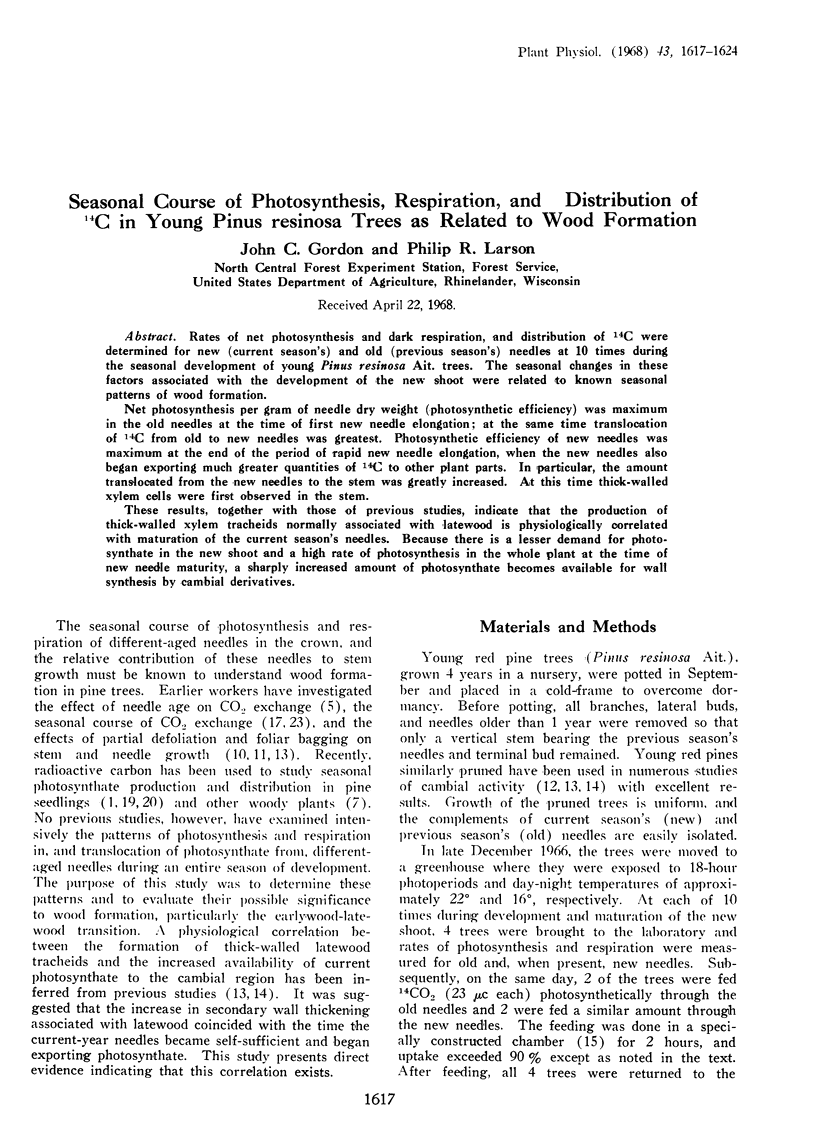
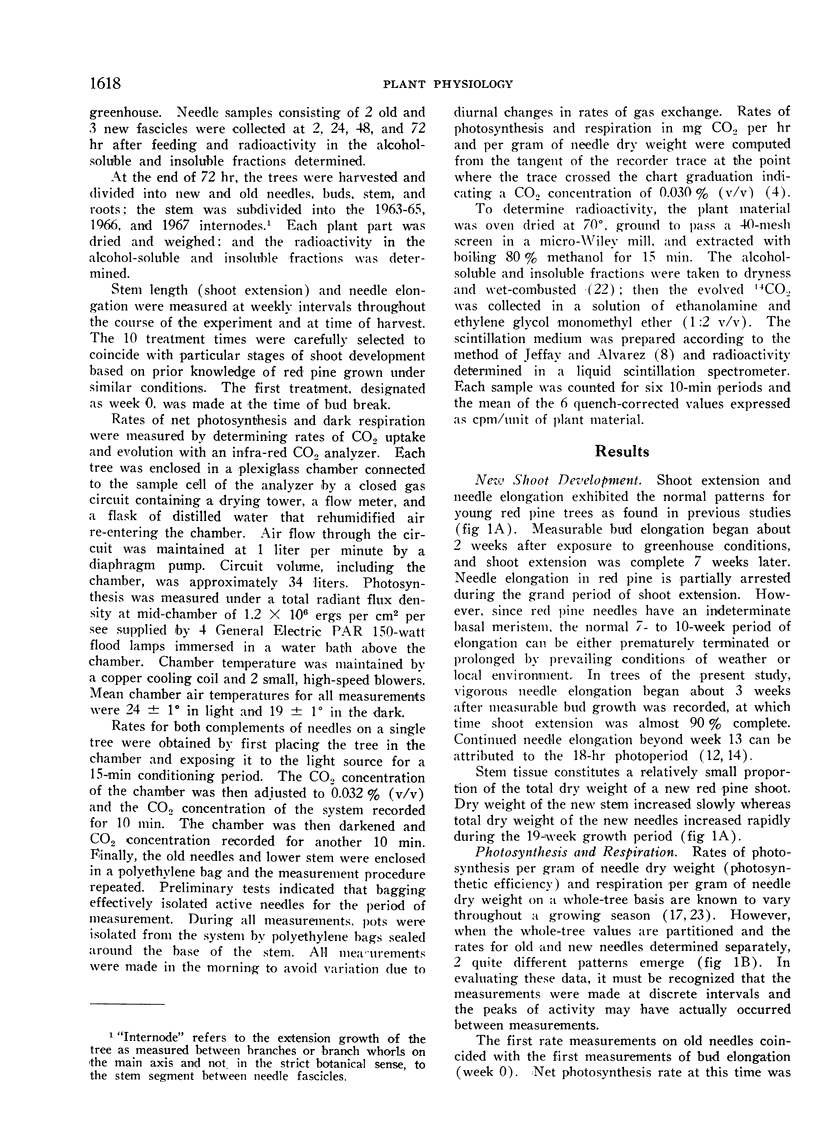
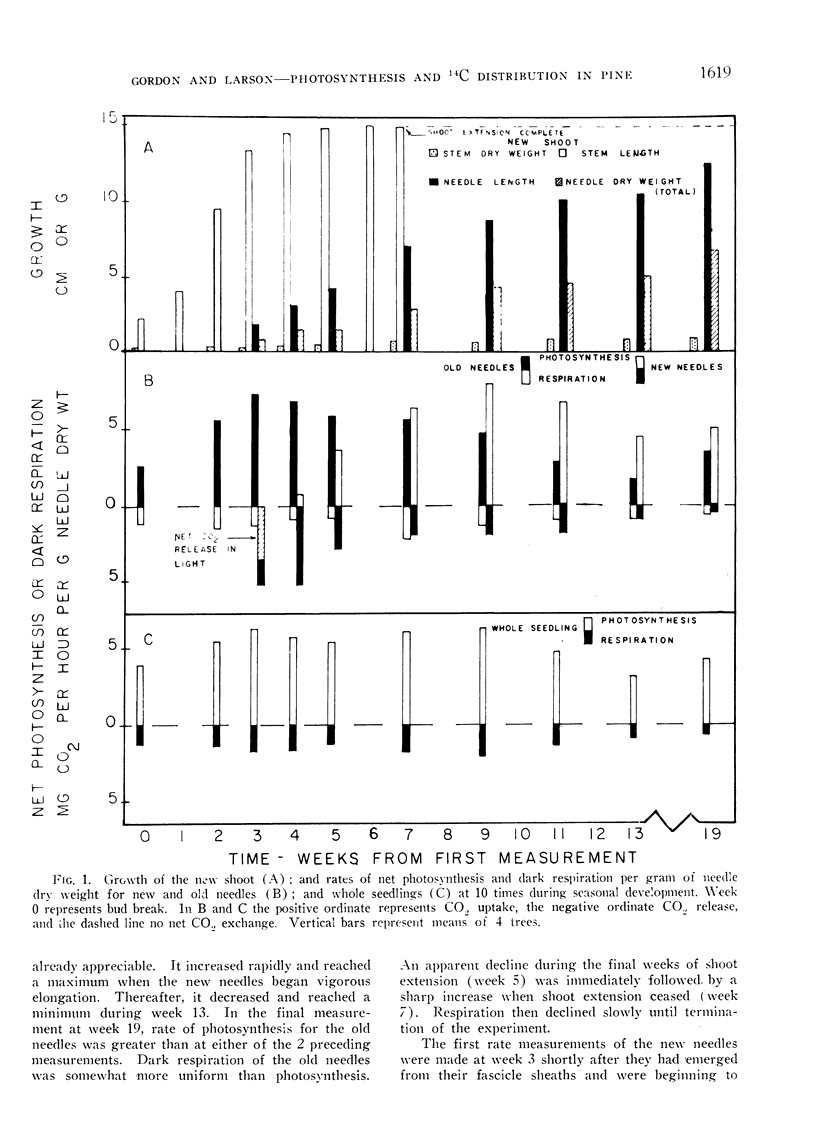
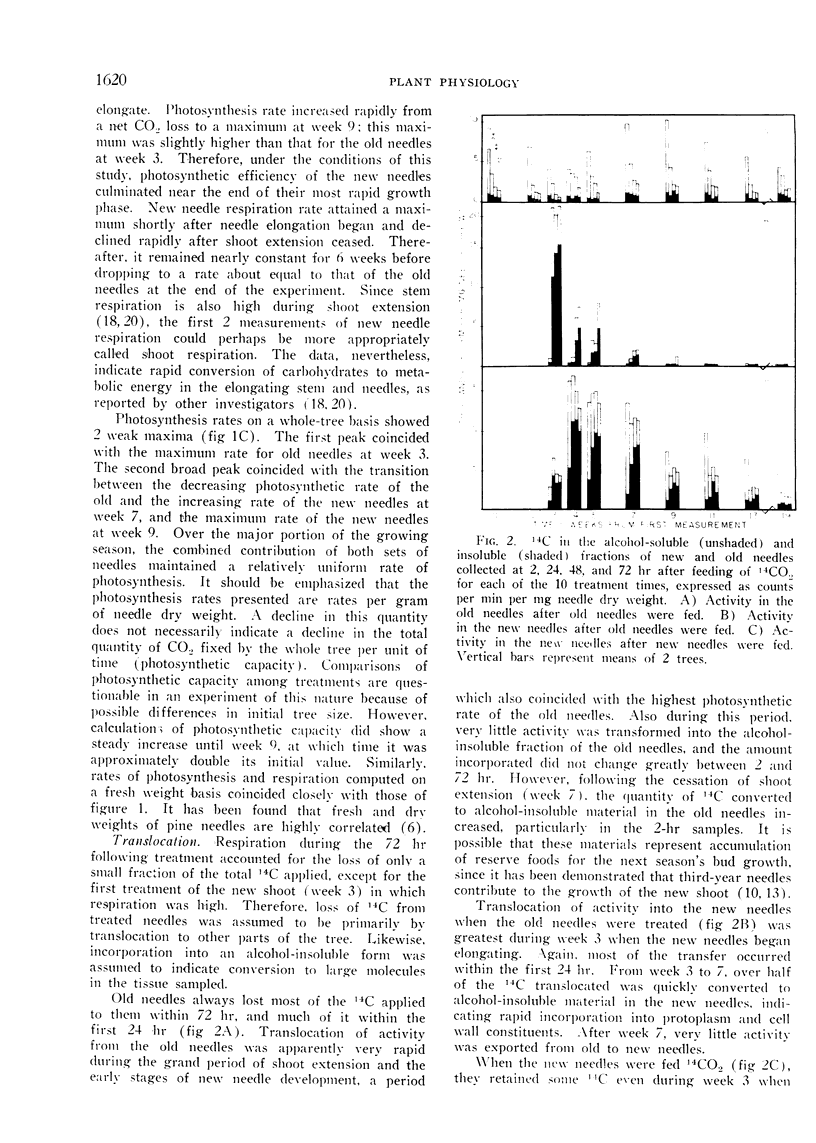
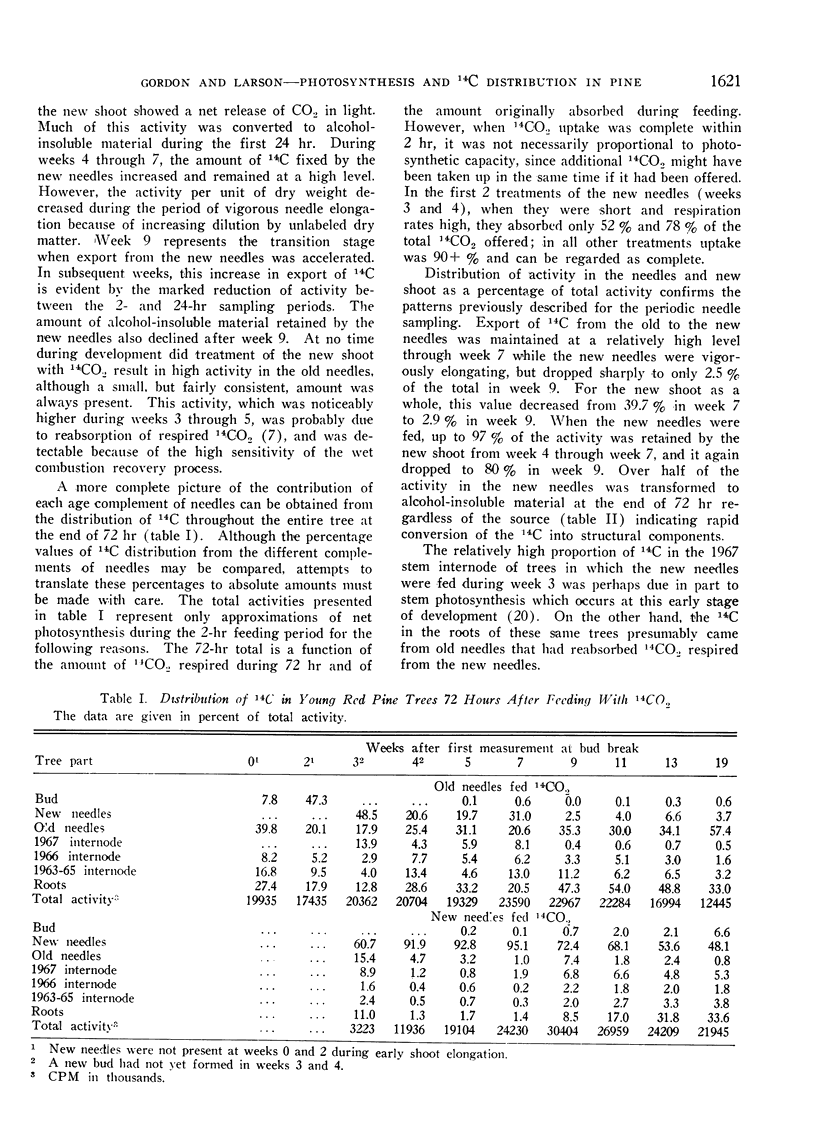
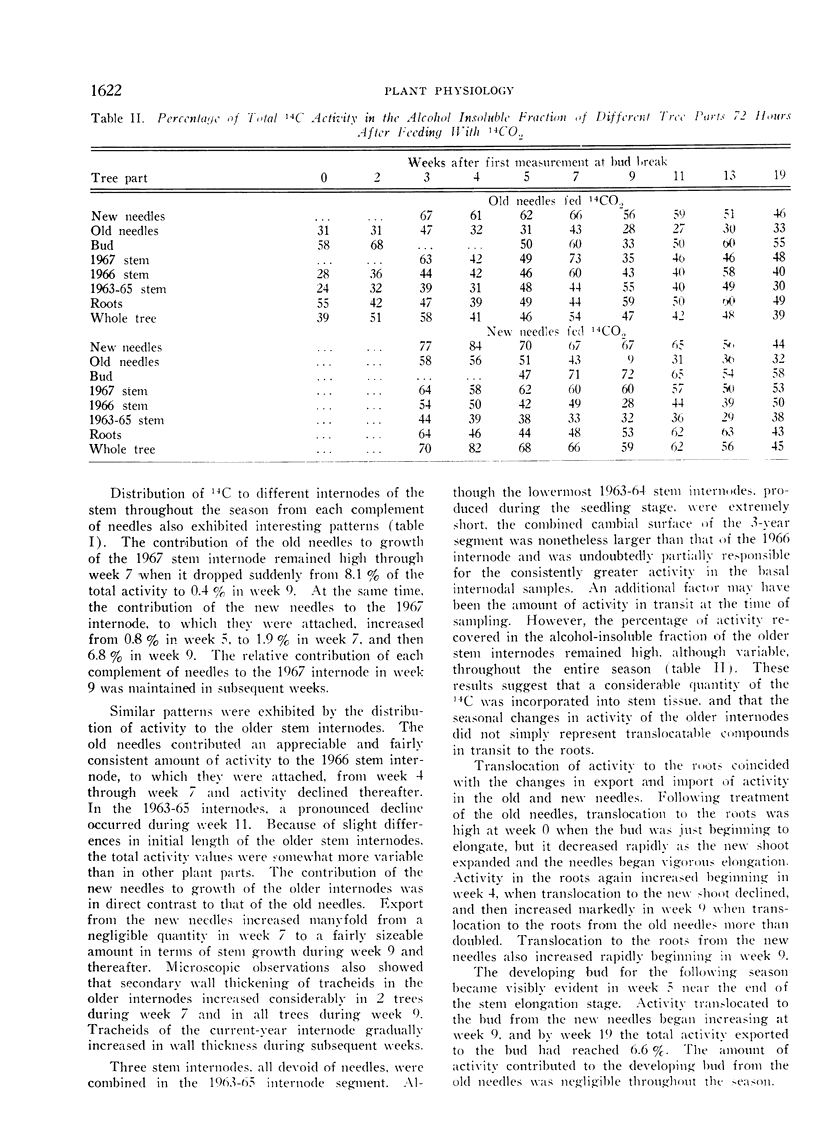
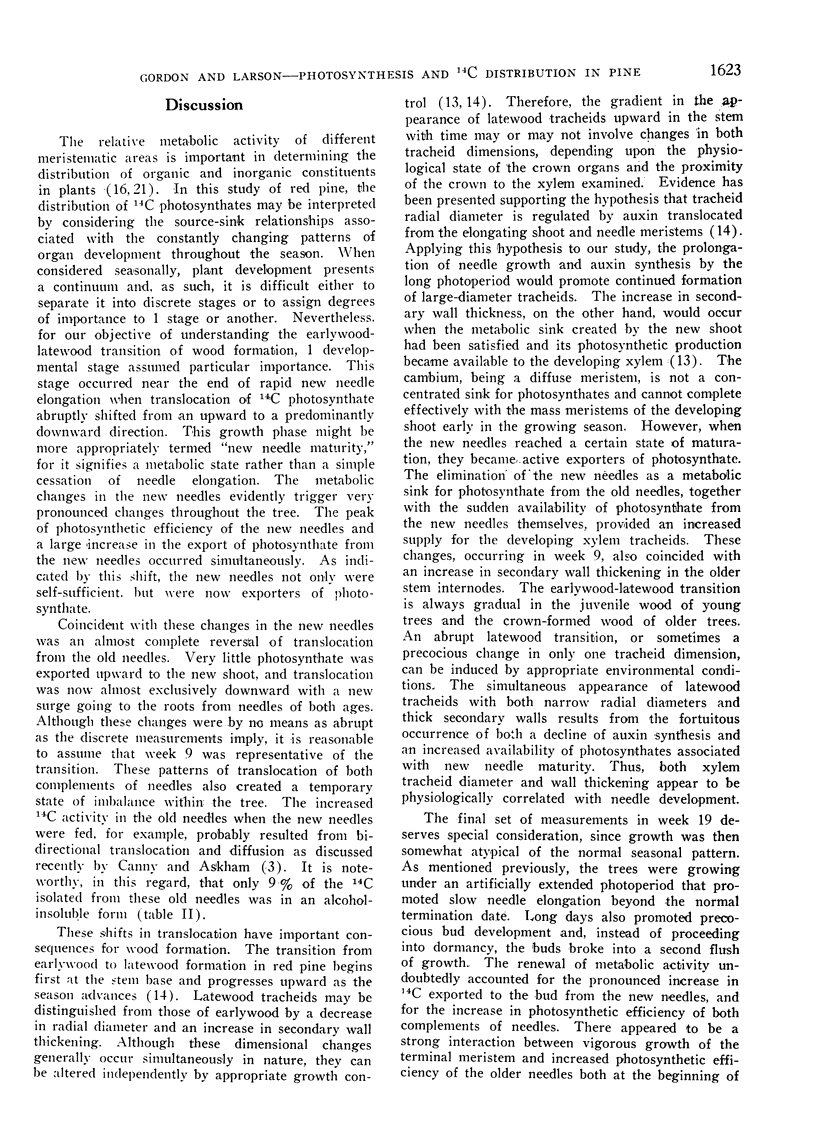
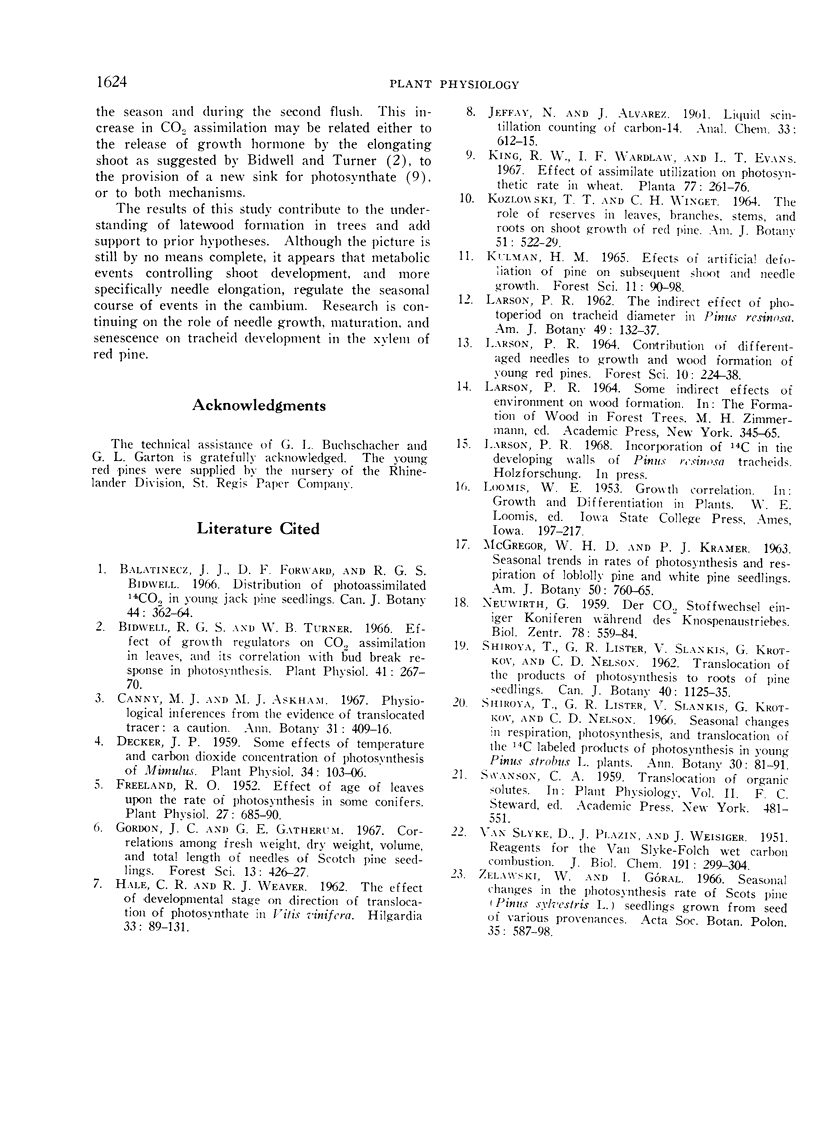
Selected References
These references are in PubMed. This may not be the complete list of references from this article.
- Bidwell R. G., Turner W. B. Effect of Growth Regulators on CO(2) Assimilation in Leaves, and its Correlation with the Bud Break Response in Photosynthesis. Plant Physiol. 1966 Feb;41(2):267–270. doi: 10.1104/pp.41.2.267. [DOI] [PMC free article] [PubMed] [Google Scholar]
- Decker J. P. Some Effects of Temperature and Carbon Dioxide Concentration on Photosynthesis of Mimulus. Plant Physiol. 1959 Mar;34(2):103–106. doi: 10.1104/pp.34.2.103. [DOI] [PMC free article] [PubMed] [Google Scholar]
- Freeland R. O. EFFECT OF AGE OF LEAVES UPON THE RATE OF PHOTOSYNTHESIS IN SOME CONIFERS. Plant Physiol. 1952 Oct;27(4):685–690. doi: 10.1104/pp.27.4.685. [DOI] [PMC free article] [PubMed] [Google Scholar]
- VAN SLYKE D. D., PLAZIN J., WEISIGER J. R. Reagents for the Van Slyke-Folch wet carbon combustion. J Biol Chem. 1951 Jul;191(1):299–304. [PubMed] [Google Scholar]


